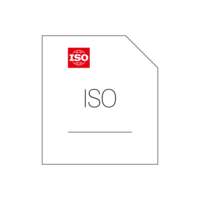

ISO 15512:2019
Ausgabedatum: 2019 04 30
Plastics — Determination of water content
This document specifies methods for the determination of the water content of plastics in the form of powder, granules, and finished articles. These methods do not test for water absorption (kinetics and equilibrium) of plastics as measured by ISO 62.
Method A is suitable for the determination of water content as low as 0,1 % with an accuracy of 0,1 %. Method B and Method C are suitable for the determination of water content as low as 0,01 % with an accuracy of 0,01 %. Method D is suitable for the determination of water content as low as 0,01 % with an accuracy of 0,01 %. Method E is suitable for the determination of water content as low as 0,001 % with an accuracy of 0,001 %. The stated accuracies are detection limits which depend also on the maximal possible sample mass. The water content is expressed as a percentage mass fraction of water.
Method D is suitable for polyamide (PA), polycarbonate (PC), polypropylene (PP), polyethylene (PE), epoxy resin, polyethylene terephthalate (PET), polyester, polytetrafluoroethylene (PTFE), polyvinyl chloride (PVC), polylactide (PLA), polyamidimid (PAI), it is especially not recommended for samples which can release NH3. Methods A, B, C and E are generally suitable for all types of plastic and moisture level.
Water content is an important parameter for processing materials and is expected to remain below the level specified in the appropriate material standard.
Six alternative methods are specified in this document.
— Method A is an extraction method using anhydrous methanol followed by a Karl Fischer titration of the extracted water. It can be used for all plastics and is applicable to granules smaller than 4 mm × 4 mm × 3 mm. The method can also be used for, e.g. prepolymer materials in the form of a powder that are insoluble in methanol.
— Method B1 is a vaporization method using a tube oven. The water contained in the test portion is vaporized and carried to the titration cell by a dry air or nitrogen carrier gas, followed by a Karl Fischer titration or a coulometric determination by means of a moisture sensor of the collected water. It can be used for all plastics and is applicable to granules smaller than 4 mm × 4 mm × 3 mm.
— Method B2 is a vaporization method using a heated sample vial. The water contained in the test portion is vaporized and carried to the titration cell by a dry air or nitrogen carrier gas, followed by a Karl Fischer titration of the collected water. It can be used for all plastics and is applicable to granules smaller than 4 mm × 4 mm × 3 mm.
— Method C is a manometric method. The water content is determined from the increase in pressure, which results when the water is evaporated under a vacuum. This method is not applicable to plastic samples containing volatile compounds, other than water, in amounts contributing significantly to the vapour pressure at room temperature. Checks for the presence of large amounts of volatile compounds are to be carried out periodically, for example by gas chromatography. Such checks are particularly required for new types or grades of material.
— Method D is a thermocoulometric method using a diphosphorus pentoxide (P2O5) cell for the detection of the vaporized water. The water contained in the test portion is vaporized and carried to the sensor cell by a dry air or nitrogen carrier gas, followed by a coulometric determination of the collected water. This method is not applicable to plastic samples containing volatile compounds, other than water, in amounts contributing significantly to the vapour pressure at room temperature. This is specially related to volatile components which can react with the acidic coating of the diphosphorus pentoxide sensor, e.g. ammonia or any kind of amines. Checks for the presence of large amounts of volatile compounds are to be carried out periodically. Such checks are particularly requir
